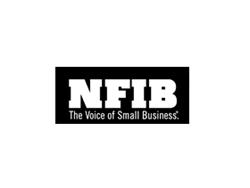SBET: Small Business Outlook Inches Up in May
Washington, DC, June 12, 2007--Small-business owners held their own during May, showing neither excitement nor anxiety over the state of the economy.
Job openings fell and are expected to nudge unemployment up, but unfilled positions remain high. Job-creation plans, although strong, were flat. Reports of price hikes eased, but continue higher than desired. Capital-spending plans, like actual outlays, were unchanged from the previous month.
On the labor front, employment gains were solid but not spectacular - about 50,000 fewer workers were hired per month in May 2007 than in May 2006. "
Nearly one-fourth of owners, 24 percent, reported unfilled job openings, down by two points from April, but historically strong.
Over the next three months, one-fourth plan to create new jobs, up one point, and 6 percent plan workforce reductions, up two points, yielding a seasonally adjusted net 13 percent of owners planning to create new jobs, historically strong and unchanged from April. Fifty-four percent reported hiring or trying to hire new workers, though 78 percent of those reported "few or no qualified applicants" for their positions. Job-creation plans were positive in all industry groups.
Capital spending in May was flat. Plans to make outlays in the coming months remained weak, unchanged from April's 29 percent of owners. Profit gains have not triggered a boom in spending. Reported capital outlays over the past six months held firm at 60 percent. Nearly half, 45 percent, reported spending on new equipment, 24 percent acquired vehicles, 17 percent bought fixtures and furniture, 13 percent improved or expanded their facilities. Five percent acquired new buildings or land for expansion.
An unchanged and rather weak 12 percent said now is a good time to expand facilities. A net-negative 3 percent expect conditions to improve over the next six months, up five points from April and typical of readings at later stages of an expansion. A net 16 percent expect higher real sales, up two points, and a positive sign for growth. Overall, expectations for economic growth are soft, but better. "Growth will continue," said Dunkelberg, "but the increase in GDP will be closer to 2 percent than 3 percent."
"
Unadjusted, 29 percent reported raising average selling prices, up one point, and 12 percent reported lowering them, down one point.
Of the 21 percent reporting higher earnings, nearly two-thirds, 65 percent, cited stronger sales, and 5 percent each cited lower materials costs and higher selling prices. For the 40 percent reporting lower earnings, two-fifths cited weaker sales, 8 percent blamed higher labor costs, 10 percent cited higher materials costs, and 5 percent each pointed to higher insurance costs, lower selling prices and regulatory costs.
Regular borrowing activity remained flat, reported by 38 percent of all owners. Only 3 percent said their main business problem was the cost and availability of credit.
